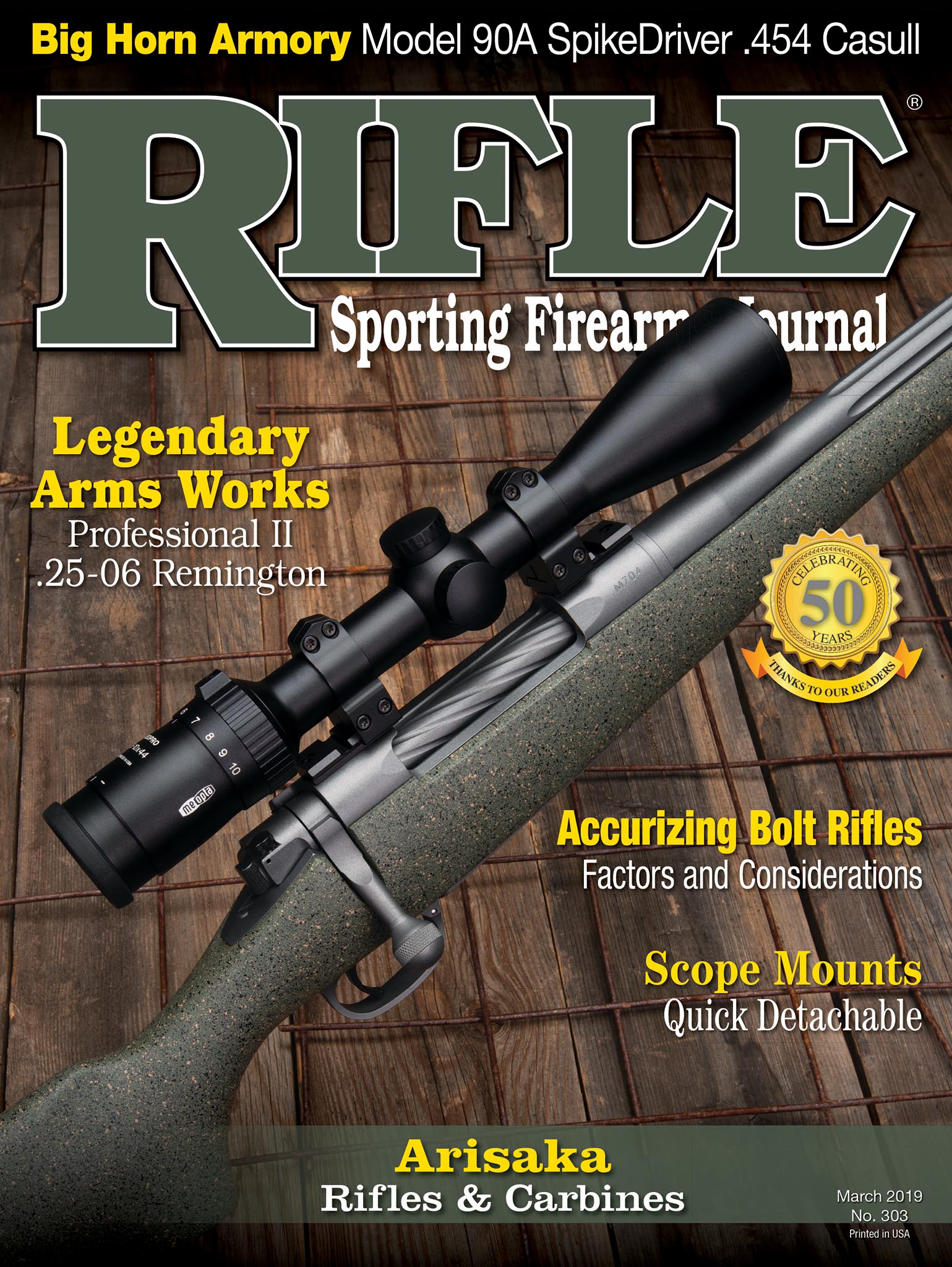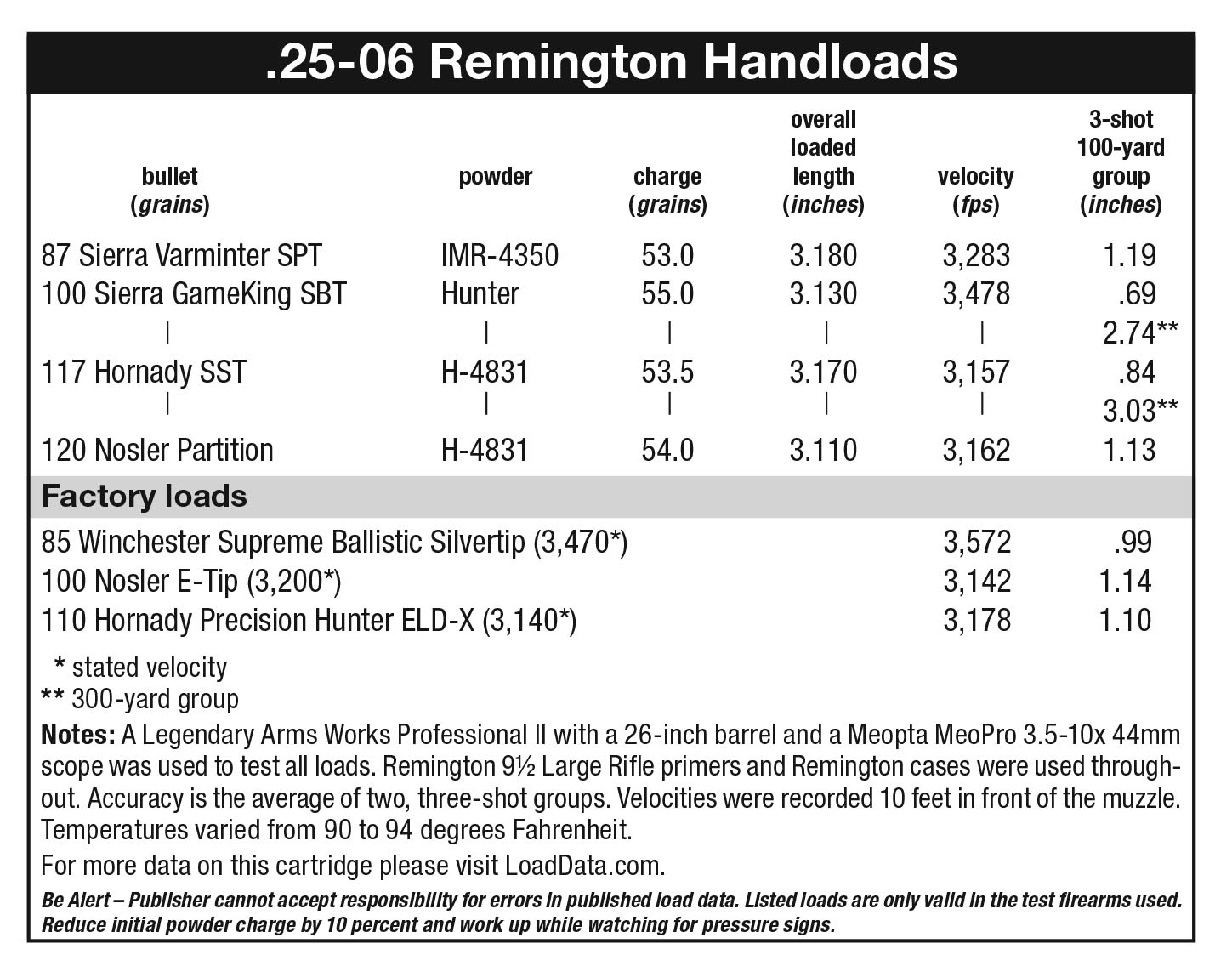Legendary Arms Works
Testing a New .25-06 Remington
feature By: John Haviland | March, 19
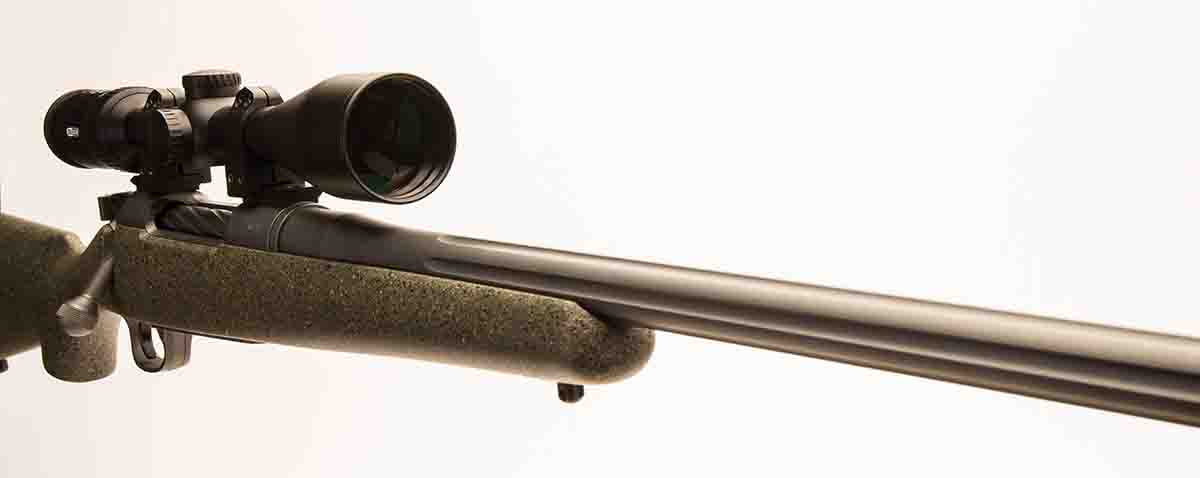
Mike Hudgins is the operations manager. “We’re starting small to get production going,” Hudgins said, “with a few gunsmiths, a logistics guy and me.”
Current bolt-action rifles include the Professional II and 704 Magpul. I’ve been shooting a Professional II .25-06 Remington. Its 704 action sets the rifle apart from other bolt actions.
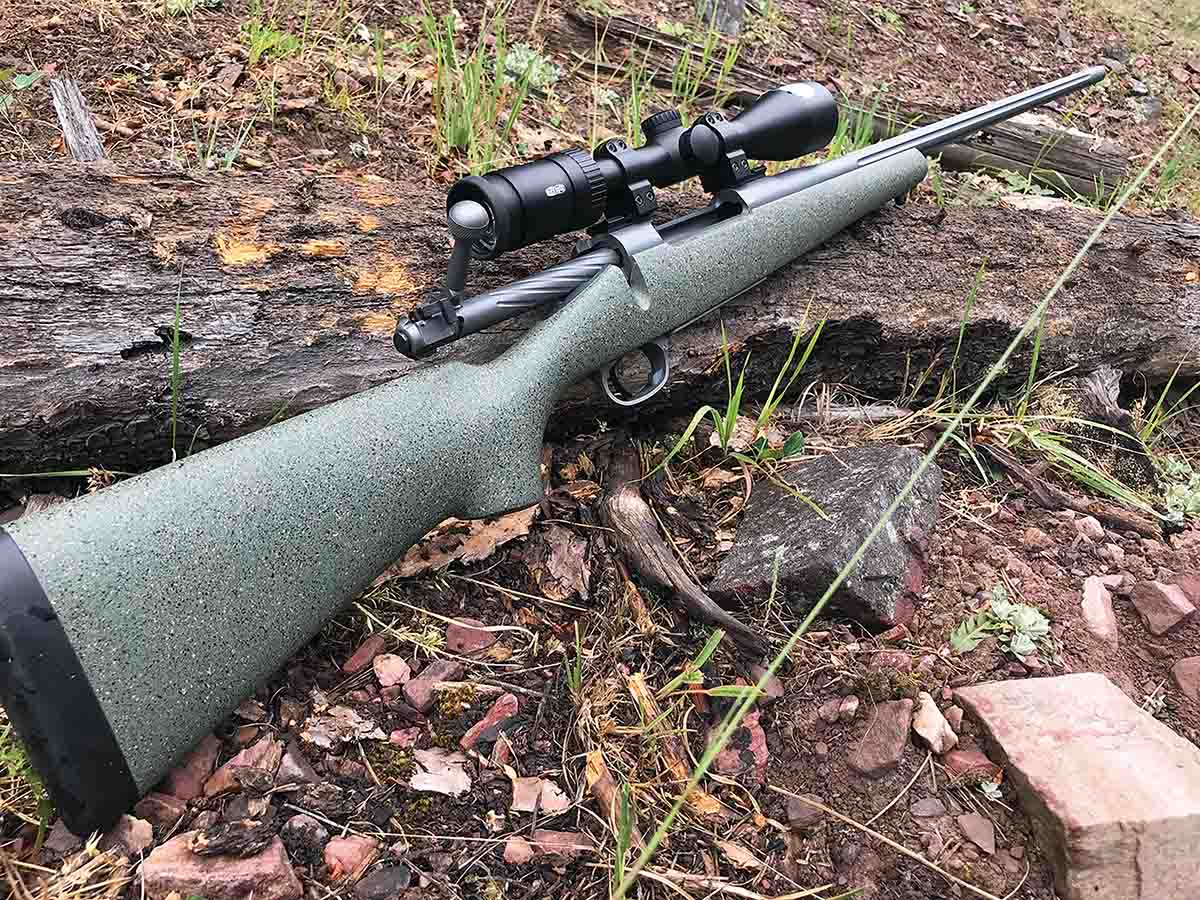
The 704 action was designed by Ed Brown of Ed Brown Products, a company known for its excellent 1911 pistols. The controlled-round feed comes from the bottom third of the bolt face’s rim being milled flush with the bolt face so a cartridge rim slips under the extractor as the cartridge is stripped from the magazine. The extractor holds the cartridge as it enters and seats in the chamber, and when it is extracted and ejected after being fired. Cartridges dropped on top of the follower also smoothly feed right into the chamber.
The extractor is a spring-loaded pivoting hook positioned in front of the right locking lug. It grips about a quarter of the rim of a cartridge. The bolt face is
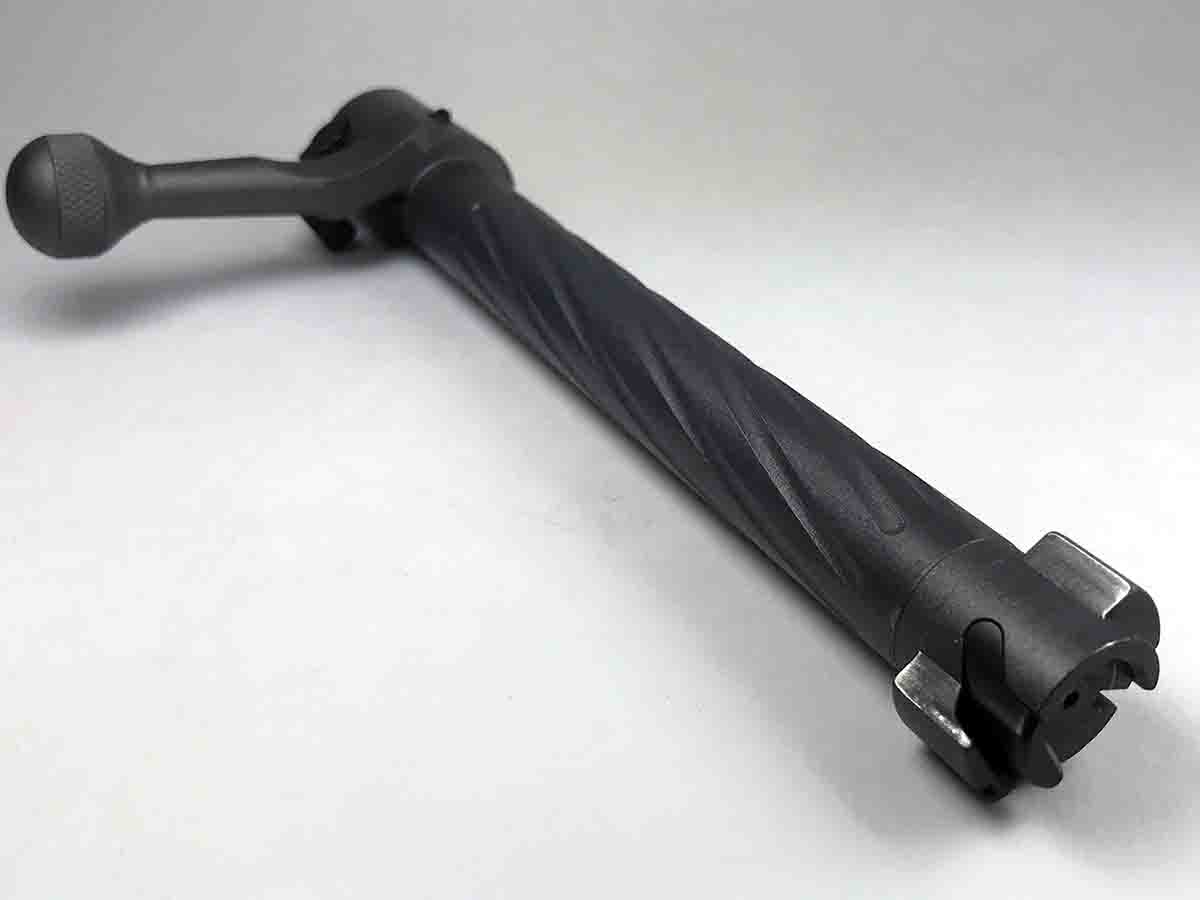
The bolt body is cut with spiral fluting, and the rear of the firing pin assembly protrudes from the back of the bolt to show that the pin is cocked. A three-position safety is located on the rear of the bolt. The safety swings back and forth slickly and silently. Bolt disassembly is easily accomplished by setting the safety in the middle position, pushing back a raised pin on the top of the bolt shroud, rotating the assembly about a half-counterclockwise turn and pulling it out of the bolt. No bolt takedown is easier.
A Timney trigger is installed on the 704 action. Legendary Arms states that triggers are set at 3 pounds. The pull weight of the trigger was 3.25 pounds on the test rifle. The weight was the same every pull of the trigger, with no creep or overtravel. Timney triggers are adjustable from 1.5 to 4.0 pounds. Rounding out the 704 receiver is an aluminum trigger guard and one-piece floorplate with a release lever (button) inside the bow. The magazine box holds cartridges with a length of up to nearly 3.5 inches.
The Professional II is chambered in 13 cartridges, from short-action cartridges like the .243 and .308 Winchesters and standard-length cartridges like the .257 Weatherby Magnum to the .338 Winchester Magnum. “The 6.5 Creedmoor is super popular right now in the Professional II,” Hudgins said. It’s followed in popularity by the .300 Winchester Magnum, 7mm Remington Magnum, the .308 and .270 Winchesters and the .280 Remington.
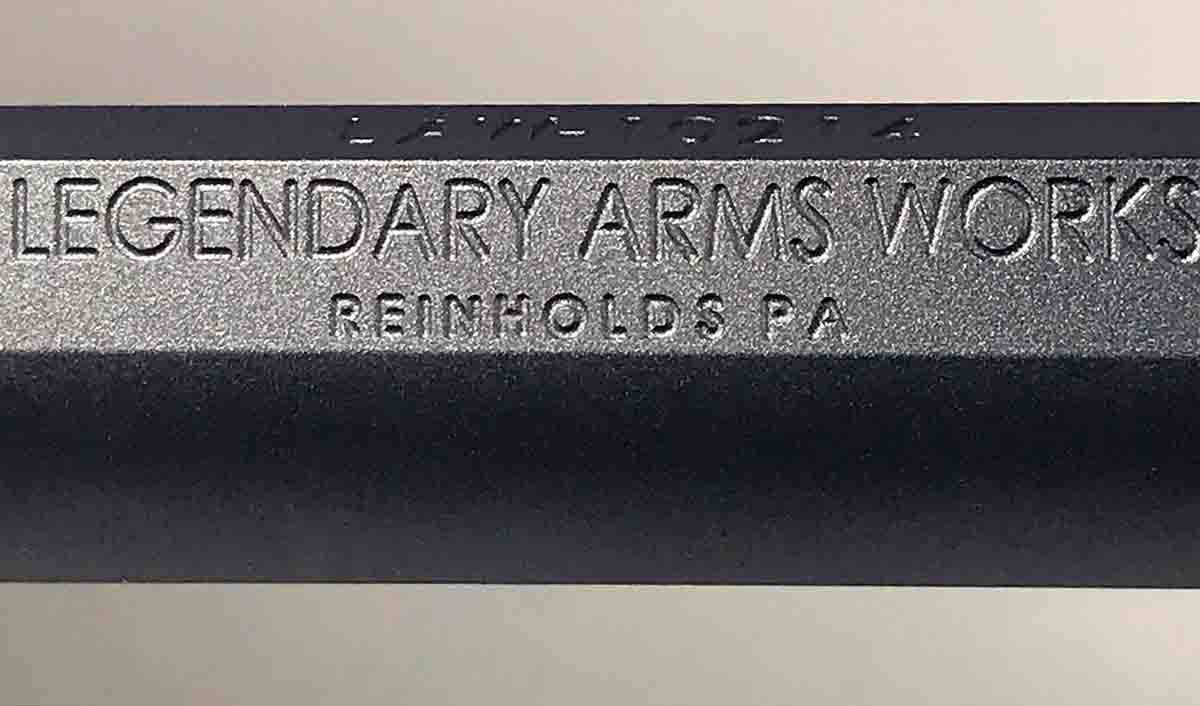
The .25-06 is also chambered in the Professional II. Shooters don’t hear much about the cartridge – or any .25-caliber cartridges – these days. That’s probably because they are squeezed between numerous .24-caliber and 6.5mm cartridges that provide a wide selection of hunting bullet weights and long-range target bullets.
I’ve been a fan of the .25-06 Remington for decades. Long ago I settled on a few handloads for it that deliver its full versatility. Loads containing 75- or 87-grain bullets at full velocity have worked well for coyote hunting. The same bullets at a reduced velocity of about 3,200 fps help preserve a barrel’s bore during extended shooting at ground squirrels and prairie dogs. Nosler 120-grain Partitions seated over a stout charge of H-4831 have worked well on deer, black bears and elk.
Legendary Arms uses Wilson stainless steel barrels. Barrel bores are lapped, and the exteriors are cut with six straight flutes. Muzzles are threaded to accept a recoil brake and come with a protective thread cap. Barrel lengths are 24 inches, but the .25-06 and .257 Weatherby Magnum barrel lengths are 26 inches. Tactical Grey CERAKOTE covers all metals surfaces.
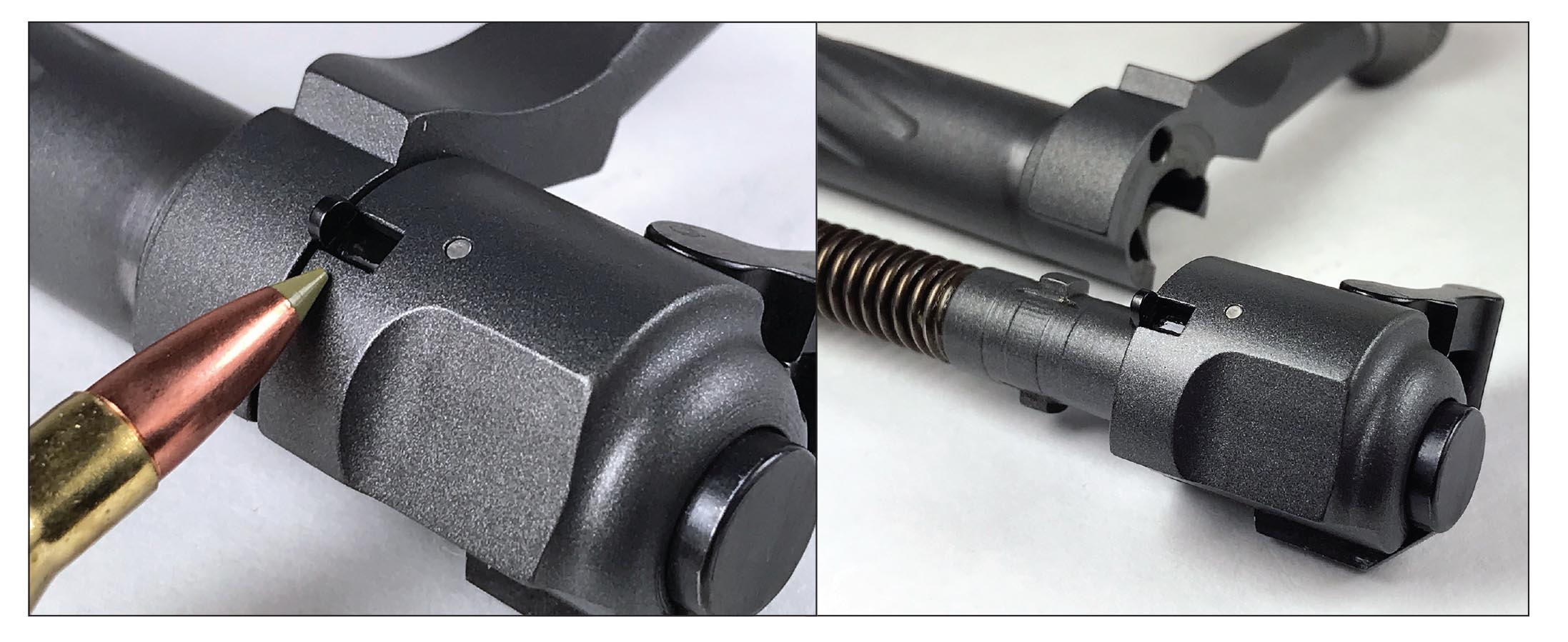
That was certainly apparent when I used several .25-06 factory loads and handloads. The rifle’s 26-inch barrel most likely added some velocity compared to a more common 24-inch barrel. However, Winchester Supreme loads with 85-grain Ballistic Silvertip bullets provided a velocity 100 fps faster than Winchester states, and Hornady 110-grain Precision Hunter ELD-X loads chronographed 38 fps faster than Hornady’s stated velocity.
Western Powders’ Handloading Guide, Edition 1 lists a velocity of 3,324 fps for Sierra 100-grain bullets fired by 55.3 grains of Hunter powder with Winchester Large Rifle primers in Remington cases. The Professional II rifle fired Sierra bullets at an average of 3,478 fps loaded over 55.0 grains of Hunter with the same primers and cases. Sierra GameKing bullets paired with Hunter powder averaged .69 inch for two, three-shot groups at 100 yards. A three-shot group at 300 yards measured 2.75 inches.
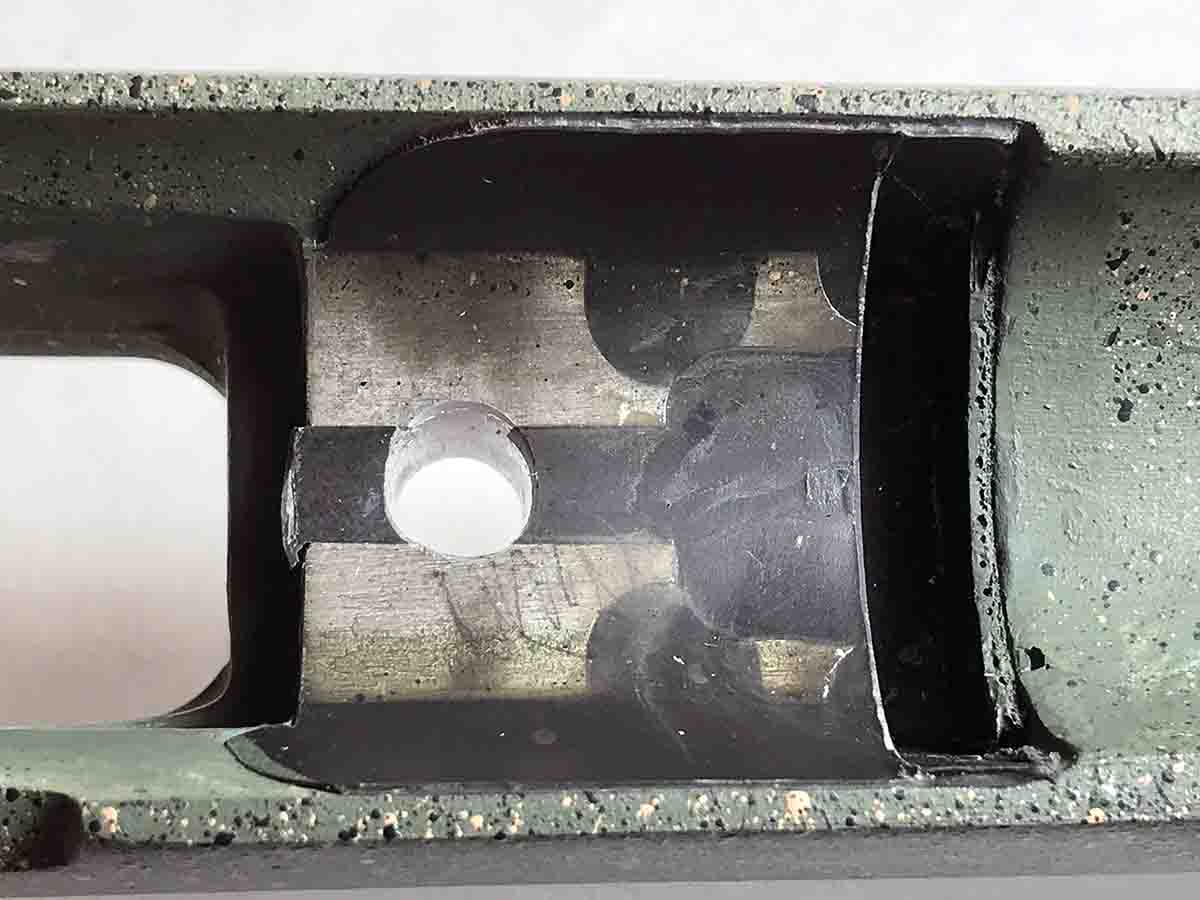
A rifle with a properly chambered barrel mated to a good action only shoots its best when they are correctly bedded in a stock. Legendary uses its own fiberglass stocks that were formerly Bansner’s High Tech Specialties. Fiberglass is hand-laid in multiple layers, and the action area is a solid epoxy-and-glass composite to yield high-compression strength. Urethane foam is used in the butt and forearm. An aluminum pillar sleeve is inserted and bedded in the hole in the stock for the rear action screw. An aluminum block accepts the front action screw and acts as a bedding surface for the round bottom receiver. Stocks are formed under pressure in molds.
“We have all sorts of molds,” Hudgins said. Besides stocks for the Professional II, the company makes replacement stocks for Howa, Mauser, Remington, Ruger and Winchester rifles.
Receiver inletting is formed by the mold. However, the inletting is not quite as precise as if it was cut by a CNC machine, so the Professional II’s recoil lug mortise and bedding block are glass bedded for an exact fit.
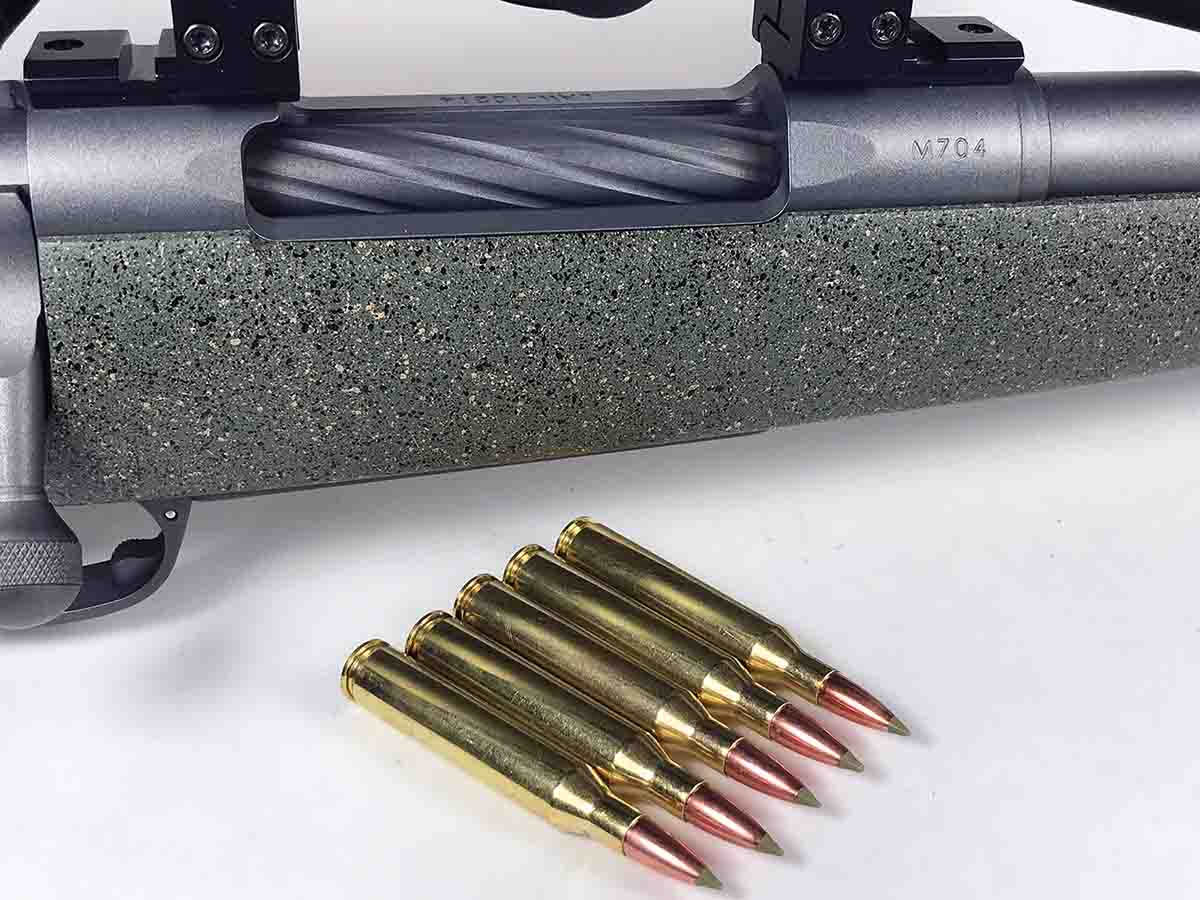
Hudgins is a fan of full-length bedding barrels in stocks because it dampens detrimental barrel harmonics. “But it’s really not practical from a production standpoint,” he said. Barrels on Professional II rifles are free-floated so there are no pressure points from the barrel touching the stock. Barrel channel inletting is tight along the barrel, and attractive.
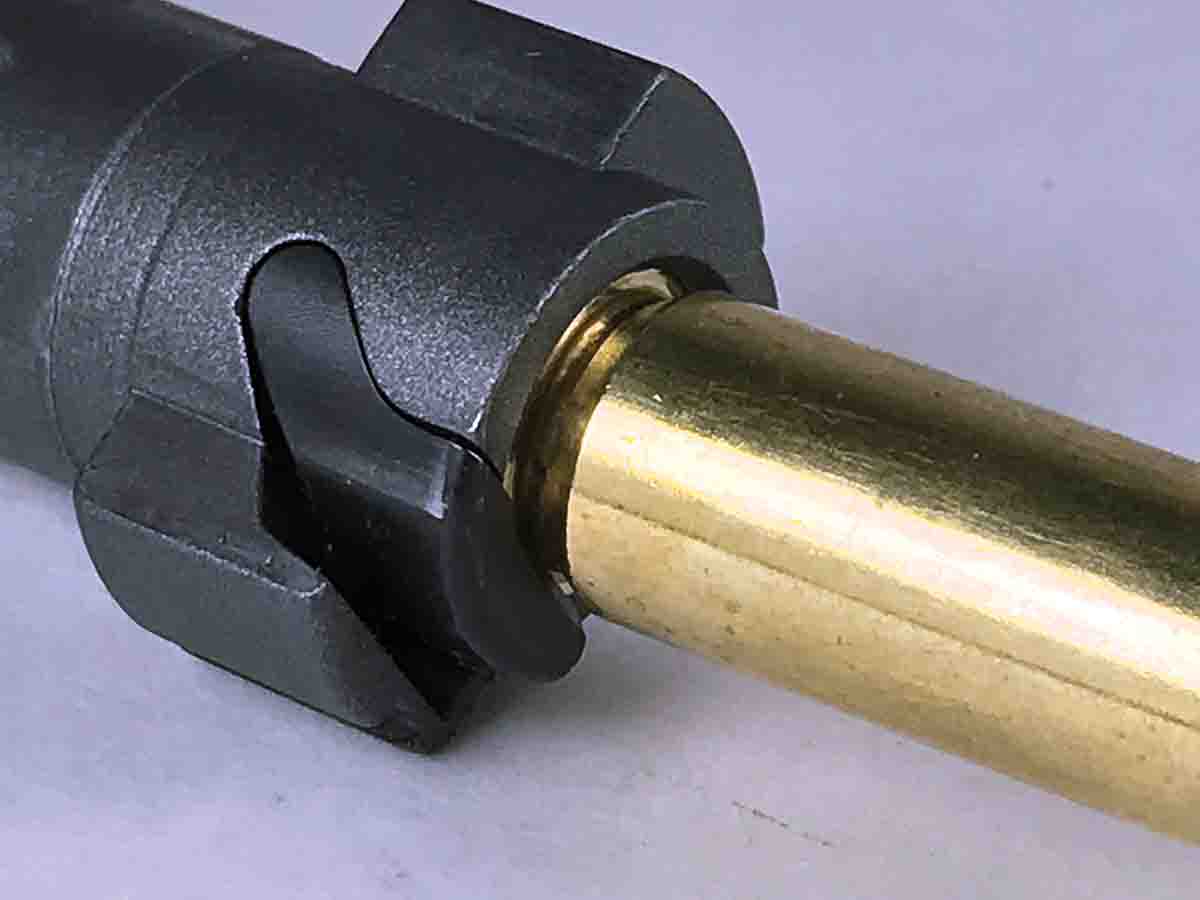
Even the stiffest stock and barrel flex somewhat when a rifle is fired, especially when the stock is on a hard surface or with a bipod attached to the forearm. The bottom of the Professional II’s barrel channel is relieved an extra bit to compensate for this flex.
The company’s website states that its rifles “are guaranteed to shoot three shots to one minute of angle (1 MOA) with premium factory hunting ammunition by a shooter skilled in the fundamentals of marksmanship.” When shooting the
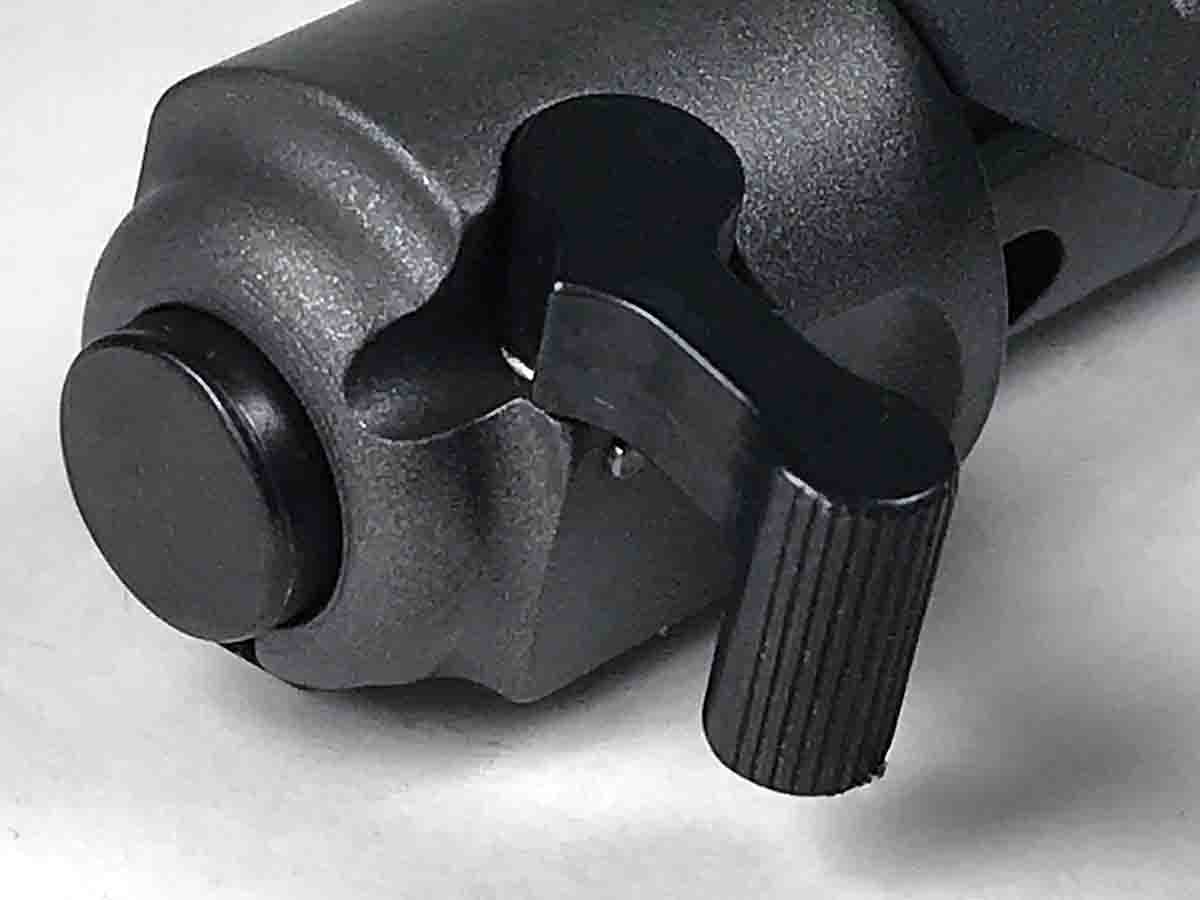
The stock provides a connection between the rifle and shooter that enables taking advantage of that accuracy. The Professional II stock has a slender wrist. Flutes on the nose of its comb are shallow, but they provided enough of a hollow to position the trigger hand’s thumb so my index finger could be correctly placed on the trigger. The comb is straight with about .5 inch of drop at the heel from the center of the bore; that is none too high. A Meopta 3.5-10x 44mm scope was mounted fairly low on the rifle, but I still had to raise my cheek slightly off the comb to see through the scope, especially when shooting from prone.
According to Legendary Arms, the Professional II rifle weighs between 6.6 to 7.1 pounds, depending on the action and barrel length. The .25-06 Remington test rifle weighed 8 pounds, 10 ounces with a Meopta MeoPro 3.5-10x 44mm scope mounted in aluminum rings clamped to the supplied aluminum bases.
The long 26-inch barrel shifts the rifle’s balance slightly forward of the front of the receiver, about 7 inches in front of the trigger. The bottom of the roughly 8-inch-long forearm is rounded, and that is where the palm of my hand naturally grasped the rifle.
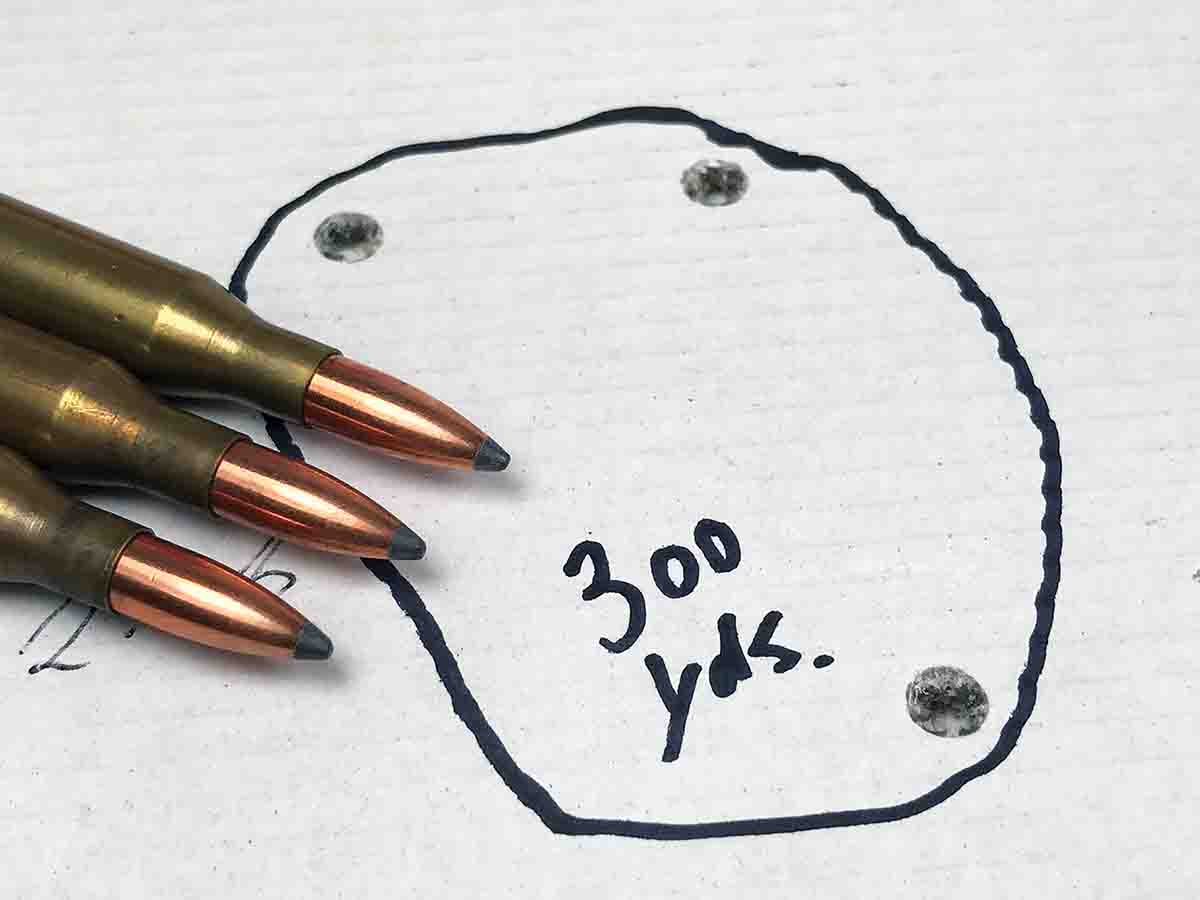
I shot the rifle offhand at 100-yard targets, and it hung fairly steady. I also shot the rifle from prone at 300-yard targets. The Professional II was steady with a Harris bipod attached to its front sling swivel stud and a sandbag under the toe of the stock. The sleeve of a coat was draped over the comb to align my eye behind the scope, and a backpack under my chest steadied me. All I had to do was keep from disturbing the crosshairs once they were aligned while pulling the trigger. Three Sierra 100-grain bullets, paired with Hunter powder, landed in 2.73 inches way out there. Three Hornady 117-grain SST bullets loaded over H-4831 formed a 3.03-inch group. I was more than pleased with those groups.
Legendary Arms is making a comeback with its Professional II rifle. For more information, contact Legendary Arms Works at legendaryarmsworks.com.


